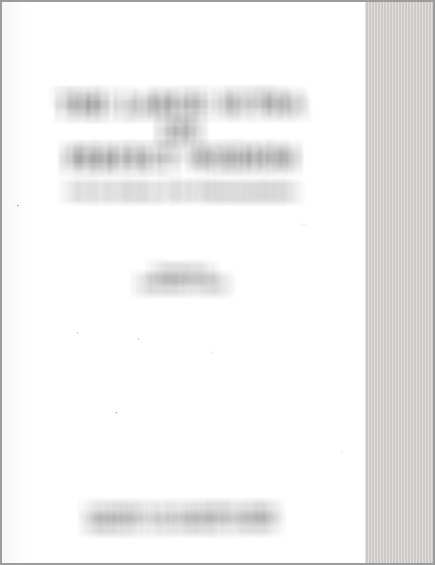Bhesajjakkhandhaka (Chapter on Medicine)
by Hin-tak Sik | 2016 | 121,742 words
This study deals with the ancient Indian Medicine (Ayurveda) in Early Buddhist Literature and studies the Bhesajjakkhandhaka and the Parallels in other Vinaya Canons. The word Bhesajja means “medicine” and is the sixth chapter of the Khandhaka, which represents the second book of the Pali Vinaya Pitaka. Other works consulted include the Bhaisajya-s...
Medicines (c): Leaves (Paṇṇa/Patra)
Only the Theravāda Bhesajjakkhandhaka and the Mūlasarvāstivāda Bhaiṣajyavastu include a list of leaf-medicines.
Moreover, the Sanskrit and the Chinese versions of the latter text have slightly different lists.
Theravāda:—“… the leaf medicines [are]: leaf of neem tree, leaf of Tellicherry bark, leaf of pointed gourd, leaf of holy basil,[1] leaf of Levant cotton, or whatever other leaf medicines there are; neither they serve as hard food among the hard food, nor as soft food among the soft food. Having accepted them, [one has] to take care of [them] for the duration of one's life, [and] to use [them] when there is a reason.”[2]
Mūlasarvāstivāda (Sanskrit):—“Leaf-medicine is: leaf of pointed gourd, leaf of Malabar nut tree, leaf of neem tree, leaf of ridged gourd, leaf of Indian devil tree; or, furthermore, another [leaf which] serves for the need of leaf-medicine [but] not for the need of food.”[3]
Mūlasarvāstivāda (Chinese):—“Leaf medicines are three leaves,[4] [which] mean: pickled vegetable (leaf of pointed gourd?), leaf of Malabar nut tree …, [leaf of] neem tree …, [leaf of] ridged gourd …, and the others belonging to this category,[which] should be used in accordance with the preceding [teaching].”[5]
All these plants are known in Āyurveda, but are not specified as leafmedicines. Moreover, various leaves are mentioned in the Āyurvedic texts but they are not systematised as a particular category. Numerous leaves are named in the group of vegetables (śāka) in the chapters concerning food and drink in these Indian medical treatises, with their individual properties and effects on the body (Caraka Saṃhitā Sūtrasthāna 27. 878 ff.; Suśruta Saṃhitā Sūtrasthāna 46. 249 ff.; Aṣṭāṅga Hṛdaya Saṃhitā Sūtrasthāna 6. 72 ff.). In modern medicinal botany, it is stated that “the leaves of plants, shrubs, and trees can be used for medicinal properties. Leaves can be used alone or can be mixed with twigs, stems, and buds” (U.S. Forest Service 2015b).
The leaf-medicines mentioned in the Chapters on Medicine of the Theravāda and Mūlasarvāstivāda Vinayas are summarised as follows:
| Original name | English name | Botanical name | |
| Theravāda | nimbapaṇṇa | leaf of neem tree | Azadirachta indica |
| kuṭajapaṇṇa | leaf of Tellicherry bark | Holarrhena antidysenterica | |
| paṭolapaṇṇa | leaf of pointed gourd | Trichosanthes dioica | |
| sulasipaṇṇa | leaf of holy basil | Ocimum sanctum | |
| kappāsikapaṇṇa | leaf of Levant cotton | Gossypium herbaceum | |
| Mūlasarvāstivāda (Sanskrit) | paṭolapatra | leaf of pointed gourd | Trichosanthes dioica |
| vāśikapatra | leaf of Malabar nut tree | Adhatoda vasica | |
| nimbapatra | leaf of neem tree | Azadirachta indica | |
| kośātakīpatra | leaf of ridged gourd | Luffa acutangula | |
| saptaparṇapatra | leaf of Indian devil tree | Alstonia scholaris | |
| Mūlasarvāstivāda (Chinese) | 酸菜 | pickled vegetable (leaf of pointed gourd?) | Trichosanthes dioica (?) |
| 婆奢迦葉 | leaf of Malabar nut tree | Adhatoda vasica | |
| 絍婆 | (leaf of) neem tree | Azadirachta indica | |
| 高奢得枳 | (leaf of) ridged gourd | Luffa acutangula |
Footnotes and references:
[1]:
[2]:
Theravāda Vinaya Piṭaka I. 201: “... paṇṇāni bhesajjāni nimbapaṇṇaṃ kuṭajapaṇṇaṃ paṭolapaṇṇaṃ sulasipaṇṇaṃ kappāsikapaṇṇaṃ yāni vā pan’ aññāni pi atthi paṇṇāni bhesajjāni, n’ eva khādaniye khādaniyattaṃ pharanti na bhojaniye bhojaniyattaṃ pharanti, tāni paṭiggahetvā yāvajīvaṃ pariharituṃ, sati paccaye paribhuñjituṃ.”
[3]:
Gilgit Manuscripts III. 1.iii: “patrabhaiṣajyam| paṭolapatraṃ vāśikapatraṃ nimbapatraṃ kośātakīpatraṃ saptaparṇapatramiti| yadvā punaranyadapi patrabhaiṣajyārthāya spharati nāmiṣārthāya|” Vāśikā is synonymous with vāsaka.
[4]:
In the Chinese version, there is a term “三葉” which literally means “three leaves” before listing the items of leaf-medicine. It seems that the translator might have mistaken 酸菜 and 婆奢迦葉 as one term rather than two. 酸菜 means “pickled vegetable”. By comparing the Chinese version with the Sanskrit one, this term probably refers to the leaf of pointed gourd that can be cooked as vegetable (Khare 2004, 458).
[5]:
Taishō Tripiṭaka 1448. 1b15-16: “葉藥者,三葉:謂酸菜婆奢迦葉...,絍婆...,高奢得枳...,及以餘類,准前應用。” 婆奢迦 is vāśikā or vāsaka. 絍婆 is nimba. 高奢得枳 is kośātakī.
